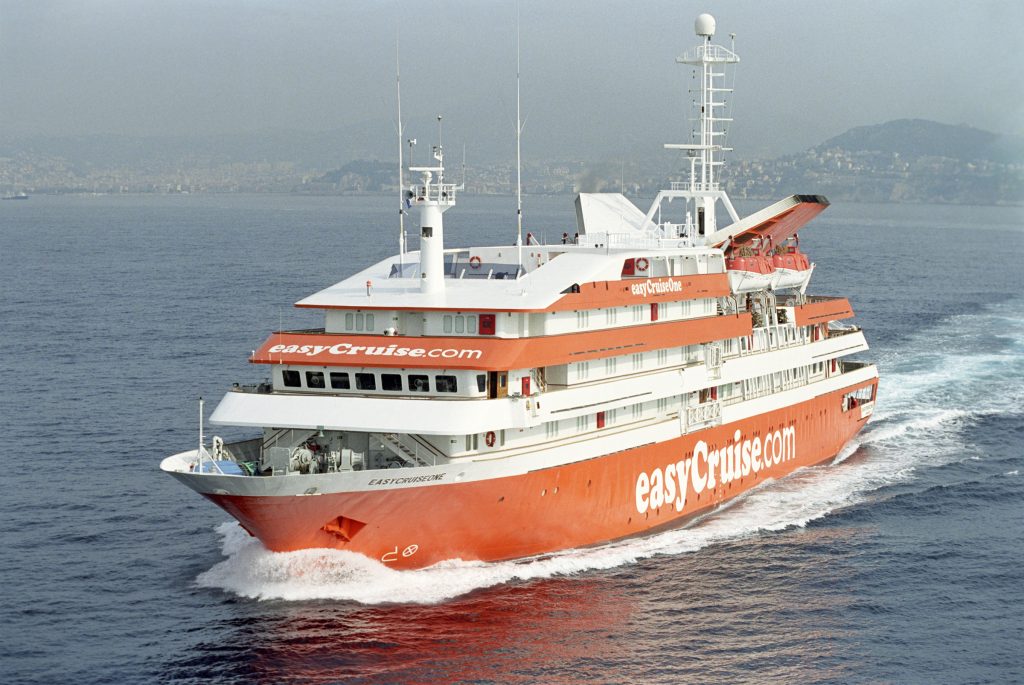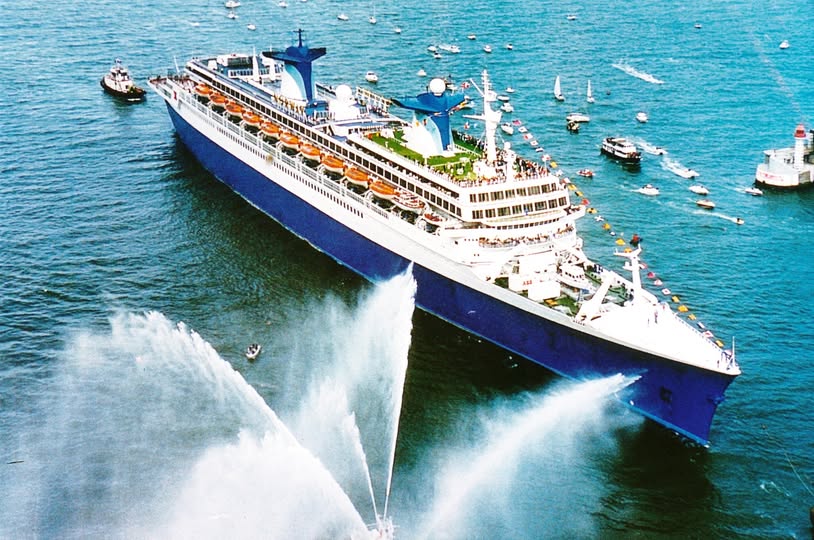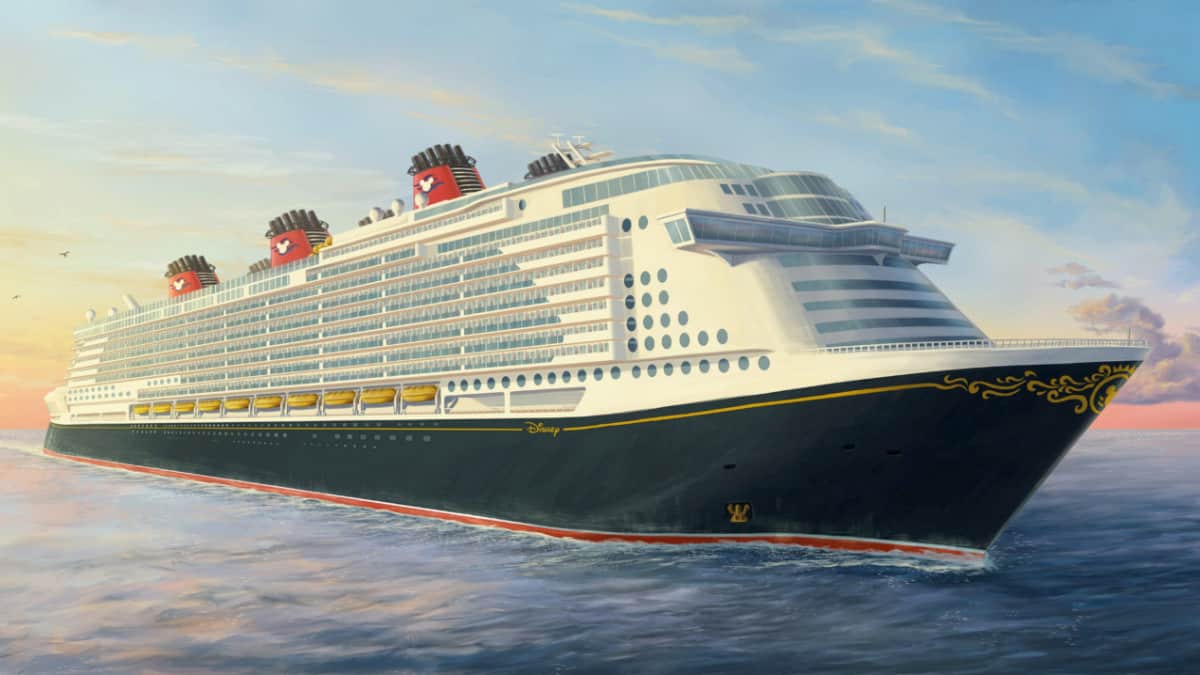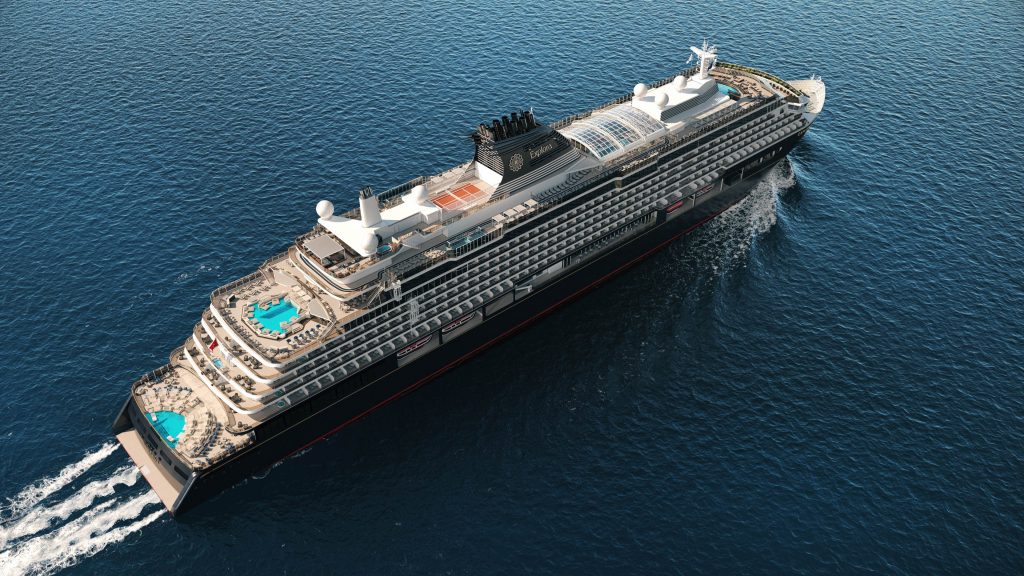Founded by Greek-Cypriot entrepreneur Stelios Haji-Ioannou, easyCruise followed the concept of the other brands of the “Easy”-concern which already consisted of a dozen other brands like easyHotel, easyJet, the airline which is doubtless the best known part of the conglomerate. It is all based on the same principle, cheap and very basic services are provided, stripped to their bare necessities. And it was the same with easyCruise, where passengers could book a cruise for the number of days they liked, mostly 4 to 8 days starting at just around 50 dollars dollars a night for a 2-berth cabin.

It was such a daring venture and so different from anything existing in the cruise industry at the time that even a television show “cruising with Stelios” was broadcast on British, US and Belgian television.
The main goal of the company was to attract younger passengers. The average age on cruise ships at the time was around 57, easyCruise managed to bring it down to 33.

The company was founded in 2005 with just one ship with the unimaginative name easyCruise One. This was the former 4,077GRT ton 100 passenger ex-Renaissance Cruises vessel Renaissance II, one of a series of 8 near sister ships built in 1990. In 1998 she was renamed Neptune II sailing out of Singapore as a gambling ship. easyCruise purchased the ship and gave her an extensive refit, and took her into service as easyCruise One in 2005.
The easyCruise One ‘s hull was painted in a very bright orange, the basic colour used by all brands of the easy-group. This was repeated in the ships interiors and even the cabins featured this very present colour.

Cabins were very simple indeed, just a bed and bathroom, nothing else. The bed just consisted of a mattress placed on the floor in most cases, while the bathroom was a glass walled area with both toilet and shower. Unfortunately the shower design was faulty resulting in water spilling into the cabin. This was later addressed by adding a small barrier between bathroom and cabin. There was no storage space, just a couple of hooks and a shelf. Two- and four-passenger cabins were available ( two-berth cabins measuring 10 square metres while four berth cabins included bunk beds), and there were 4 a bit more luxury suites with glass sliding doors and a small balcony. Cabins were not cleaned on a daily basis, even beds were not made, guests had to arrange this through the reception at additional cost.
Facilities on board easyCruise One consisted of a small store and gift shop, a coffee shop on deck 2, a sports bar on deck 4 and a second bar and hot tub outside on the upper deck. She did not have a proper restaurant or main lounge.
Later she was refitted with a colourscheme designed by famous Dutch interior architect Jan de Bouvry at the Eluvsis Yard in Greece where the over-bright orange interior was toned down to dark grey tones with some minor orange accents. To upgrade the number of facilities avaialable on board, the sports bar became the restaurant Fusion on Four, the coffee shop was removed and replaced with cabins. Also an internet cafe and gym were added.


When the easyCruise One was refitted in 2004-2005 pre-fabricated cabins were placed in her hull and due to a lack of time outside cabins did not get portholes. During her second refit these were now cut in her hull.
75% of the passengers were British, while the others were mainly American or Canadian guests. Summers were spent in the Mediterranean calling at ports on the French and Italian Riviera and Greek islands, while easyCruise One repositioned to the Caribbean in winter.

The ship would remain in port mostly until 04.00 AM, so passengers could enjoy the local nightlife. Unforntunately, this meaned they would also dine ashore. There was no incentive to have any meals on board, as they were -like almost everything else on the ship- an extra that had to be paid for. Passengers often brought their own food on board and had their meals in their cabin. Unfortunately, the company made very little money this way, in fact only the -very friendly priced- fare.
Reviews were not very favourable overall, the product was just to basic, and guests complained about the ever present bright orange. So, the company did some changes, including some basic services in the cruise fare and softened the colour scheme somewhat, removing the bright orange in places. The ships hull colour was changed in dark gray with an orange band.

In 2006 easyCruise expanded by adding a river cruiser to its fleet which was based in Amsterdam, but after just a couple of trips she was taken out of service due to her owner’s financial problems (she had been chartered). Concerning the seagoing part of the business, at the beginning the aim was to grow to a fleet of seven vessels. It never came to that. However, it was decided to replace easyCruise One with a larger vessel and the former soviet ferry Lev Tolstoy which was acquired and taken into service as the easyCruise Life. She measured 12,711GRT and carried 574 passengers and with her length of 137 metres was 49 metres longer than her predecessor.
But easyCruise kept struggling with a business model that just did not attract enough passengers as it became clear that guests wanted more luxury and a “complete” cruise product instead of having a cruise with virtually everything stripped and offered at a surcharge. On top of this, with passengers spending most of their money ashore and a very low cruise fare, the venture just wasn’t profitable.

In 2009 the line and its ship were sold to Hellenic Seaways for 9 million pounds and Stelios added a substantial investment in this company as part of the deal. But in 2010 easyCruise ended operations completely. Also with new owners the company could make a profit.
EasyCruise Life was sold to Bleu Ocean Cruise Line. They were not very lucky with her as already during her first cruise, a crack in her hull was discovered that resulted in a list of 5 degrees which had to be addressed immediately. A couple of years later in 2014 she was sold for scrap.
In 2010 when easyCruise came to an end quietly (passengers booked on future cruises were refunded) and the website was deactivated. Presently the easy-group, still using the easyCruise-company name has teamed up with Variety Cruises, an operator of luxury yachts and today the easyCruise webpage directs to Variety Cruises

easyCruise one was sold to Dubai interests, being a member of the Emirate’s ruling family, with plans having Platinum Yachts converting her to the Royal Yacht DBII at its Jebel Ali facility together with her former sister Renaissance I which was renamed Dubawi. Dubawi has been converted during an 18-month rebuild into an ultra luxury royal yacht carrying just 44 guests. It seems work on easyCruise One, renamed Cruise One not much has not yet started so far and she has been laid up in Dubai Maritime City since 2009 hving been out of the water and placed on quay for the last couple of years.
Photographs used in this article have been copied from the former easyCruise website where they were freely available.




